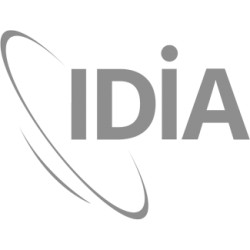In the early universe, most matter as we know it was in the form of neutral hydrogen. Some of it is still lying around and is often seen because it absorbs light from galaxies further away, and obstructs our seeing. Neutral hydrogen was almost evenly distributed, but small differences in density were present. Mapping this neutral hydrogen, we are able to calculate some fundamental properties of the universe but this has been challenging with existing telescopes because the signal coming from the neutral hydrogen is very faint. Now, with the unique capabilities of the MeerKAT telescope and with a new technique called Intensity Mapping, it should be possible.
To observe the faint signal emitted by neutral hydrogen, to estimate its distribution and to have an idea of the density variations, one needs to observe relatively large parts of the sky (fields) for a long time, with high resolution. This means, of course, a lot of data.
In this paper, the team used a simulation to forecast what the MeerKAT could see, and took those simulations through the MeerKAT data processing pipeline using the ilifu research cloud to demonstrate that using a new technique pioneered by the team called Intensity Mapping, the neutral hydrogen density and variations could indeed be observed.
The next step is for the team to keep refining their simulations and carry out the analysis using real data.
Reference:
Sourabh Paul, Mario G. Santos, Junaid Townsend, Matt J. Jarvis, Natasha Maddox, Jordan D. Collier, Bradley S. Frank, Russ Taylor
HI intensity mapping with the MIGHTEE survey: power spectrum estimates

1 thought on “New paper: Mapping neutral hydrogen with MeerKAT to understand the distribution of matter in the Universe”
Comments are closed.